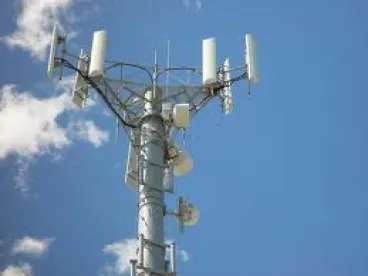This is the first in a three-part series on commercial landlords, developers and cell tower leases. The post below examines considerations on purchasing property with a cell lease. These considerations apply to all persons purchasing property with a cell lease who are seriously concerned about preserving the value, use and future development of the property. Future posts will examine owning and selling a property with such lease, all based on our 23 years of experience representing property owners on cell leases.
First, get a copy of the actual lease; do not rely on a memo of lease. Make sure to get all lease amendments since often the most important terms are in later amendments. It is best to get these directly from the tenant whose records are typically complete, while those of the property owner usually are not. Only these documents tell for sure the encumbrances on the property you are purchasing. Also, cell leases have often been transferred. A title report or recent rent check will show the current tenant.
Second, find out (generally from a title report) if the lease, right to receive rent and future antenna leasing rights for the property have been sold. Many leases/antenna leasing rights have been sold via a specialized “easement” (occasionally via a lease) for long periods of time – 30 years to perpetuity. If sold, the easement terms are often more harmful to the property owner than the original lease. During the easement term, the property owner generally will receives no rent. Tenants and easement holders will generally provide documents to a prospective purchaser once a signed buy-sell agreement has been established. Occasionally arrangements can be made to obtain these documents sooner.
Third, request from the tenant/easement holder engineering drawings showing the parent parcel, leased area, access easement and utility easement. If the lease was sold, the purchaser almost always has such drawings.
With these documents, you can then accurately evaluate what portions of the property have been encumbered by the lease/easement and applicable terms. Purchasers sometimes skip these steps but taking chances is risky, as we have seen when brought in too late. When our experience is sought from the outset, on occasion we have found terms that scotched a sale or terms that may lead to a reduction in the purchase price.
Rent is obviously an important element. A secondary item on rent is determining whether and/or when the rent might be increased. This usually relates to the lease term. The precise language of the lease and engineering drawings is beyond the scope of this blog.
A major consideration is whether and to what extent the documents affect the owner’s future use and development of the property. We have seen instances where this was affected to the point where the property was rendered nearly valueless.
Look at the location of the leased area and easements.
-
Are they well defined in the lease or easement?
-
Can the tenant/easement holder unilaterally make changes, such as expanding the leased area?
-
Do the leased areas or access routes harm future development? (e.g., is the leased area is in the middle of the parent parcel or where natural expansion would occur.?)
Don’t rely on assurances that they will "consent to changes.” Often they will not or not without exacting substantial concessions. A possible exception is changes in access and utility easement routes, as long as you pay all costs! Well-drafted documents will have provisions, including relocation clauses, that allow development of the property while preserving the tenant’s need to be very close to its current location.
Examine interference provisions. These can say, or be close to saying, that nothing can be done on the property that might affect the cell lease. So a new building cannot be built, an existing building cannot be increased in height and/or items placed on its roof if that might harm the propagation of cell signals. Will this impair the purchaser’s plans for the property, such as building two-story homes or multi-story commercial buildings?
Another common (and vastly overreaching) provision says that no new radios can be brought on the parent parcel after the lease was signed. Sometimes this extends to nearby properties of the property owner or those within a certain number of miles. What? No cell phones, Wi-fi, Bluetooth, police radios, ATM’s (they have radios), soda machines (ditto) or radios needed by the building owner or tenants? A final provision to look out for gives the tenant/easement holder the exclusive right to put new radios on the property, often mini-cell towers or Distributed Antenna Systems (DAS).
On lease term, even though a lease or easement may be cancelled on short notice or not renewed, this almost never occurs. Assume that the documents will be in effect for the maximum time they allow.
If the lease is for antennas on a building or for a tower near significant buildings, examine the terms in detail. Leases for cell antennas on buildings need to be more detailed and complicated than those for a tower on open land in order to protect the property owner, the building and its use and maintenance. For example, there are often three areas being leased: space on the ground for equipment and generators; space on the roof for antennas; and space in between for connecting wires. Each scenario has different terms that apply, such as the tenant having to remove rooftop equipment at its expense for roof work. Unfortunately, the detail is often not there, resulting in forms of leases intended for a specific purpose remaining unmodified.
Finally, consider security. The tenant needs 24/7 access but in accordance with the property owner’s reasonable security provisions. Do the documents provide for this?
Many other cell lease/easement terms are of a more conventional nature. The preceding points are some of the key issues property owners should look at prior to purchasing a property. Well-advised purchasers may seek concessions (or even walk away) if a serious impairment if found.




 />i
/>i
